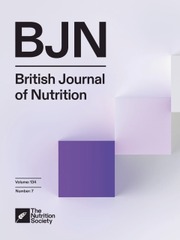No CrossRef data available.
Article contents
The role of n-3 fatty acids in acute pancreatitis
Published online by Cambridge University Press: 09 December 2024
Abstract
Prior observational studies have reported the potential protective effect of n-3 fatty acids on the prognosis of acute pancreatitis (AP). However, the causal impact of n-3 fatty acids on AP is unclear. We aimed to investigate further the association of n-3 fatty acids with AP. We performed a meta-analysis and Mendelian randomisation (MR) to explore the association between n-3 fatty acids and the prognosis of AP from clinical observation and genetics perspectives, respectively. Nine randomised controlled trials were included in this study. The result meta-analysis showed that complementary therapy of n-3 fatty acids significantly decreased mortality (Relative Risk (RR): 0·30; 95 % CI 0·14, 0·65, P < 0·05) and infectious complications in AP (RR: 0·45; 95 % CI 0·27, 0·77, P < 0·05). Compared with the control groups, the hospital stays (MD: −1·02; 95 % CI −1·85, −0·20, P < 0·05) in AP patients with n-3 fatty acids treatment were statistically reduced. However, the ICU stay (MD: −0·49; 95 % CI −1·29, −0·31, P > 0·05) between control groups and AP patients with n-3 fatty acids treatment was insignificant. Utilising genetic susceptibility analysis in the MR approach, the MR showed n-3 fatty acids have a significant causal effect on the AP risk (OR, 0·887; 95 % CI 0·797, 0·986, P = 0·027, fixed-effect; OR, 0·887; 95 % CI 0·792, 0·993, P = 0·037, random-effect). n-3 fatty acids complementary therapy may improve the prognosis of AP. Furthermore, genetically predicted serum levels of n-3 fatty acids can significantly lower AP risk.
Keywords
- Type
- Research Article
- Information
- Copyright
- © The Author(s), 2024. Published by Cambridge University Press on behalf of The Nutrition Society
Footnotes
Binbin Tang and Wenyang Zhang are first authors.



